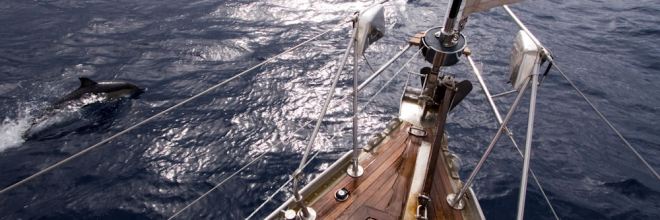Gerard LeBlond for www.redorbit.com – Your Universe Online
A new study reveals that dolphins produce roughly ten times the strength than the fittest human athlete, according to Discovery News.
The new findings explain why dolphins are able to swim alongside boats. Originally, scientists believed that the dolphins used fluid-flow to propel themselves through the water. In reality, the aquatic creature is just super strong.
Study lead author Frank Fish, a professor of biology at the Liquid Life Laboratory at West Chester University, and his colleagues had a goal: “Let’s see how much power a dolphin can produce.”
“So I used some hydrodynamics models that looked at the motion of the flukes (dolphin tails) and came up with the realization that dolphins could produce very high amounts of power,” Fish said.
Since these were only theories, Fish and colleagues wanted to do a study on the dolphin using a method called digital particle image velocimetry (DPIV). This method measures the direct force exerted by an animal in water.
“No one is going to let you put a 55 gallon drum of glass beads in with a dolphin and no one is going to let you shine a laser beam at a dolphin,” Fish said in a statement.
Fish met with Timothy Wei, from the University of Nebraska, who worked with Olympic swimmers, having them swim through a curtain of microscopic bubbles. Fish then contacted Terrie Williams and asked if he could use her dolphins (Primo and Puka) with the same method.
At the University of California in Santa Cruz, Fish, Wei, Williams and graduate student Paul Legac used a scuba tank of compressed air and a garden soaker hose to produce the bubbles. While filming the process as the dolphins swam through the bubbles, the team could noticeably see the water propel backwards as the mammals moved forward.
“We were in this concrete underwater viewing area… it was cold and damp, but you would get really excited and forget about that as you saw the animal go past and you’d see the vortices come out so nicely,” Fish remembered.
The amount of power produced was calculated by Legac and Wei. The dolphins produced 549 watts (W), which is 1.4 times the power that an amateur cyclist can sustain for a consecutive hour. But when the dolphins surged forward, 5,400 W were produced.
“If I can do it for a dolphin, can I do it for a whale? Can I do it for a manta ray?” Fish stated with a grin at the completion of the study.



Comments